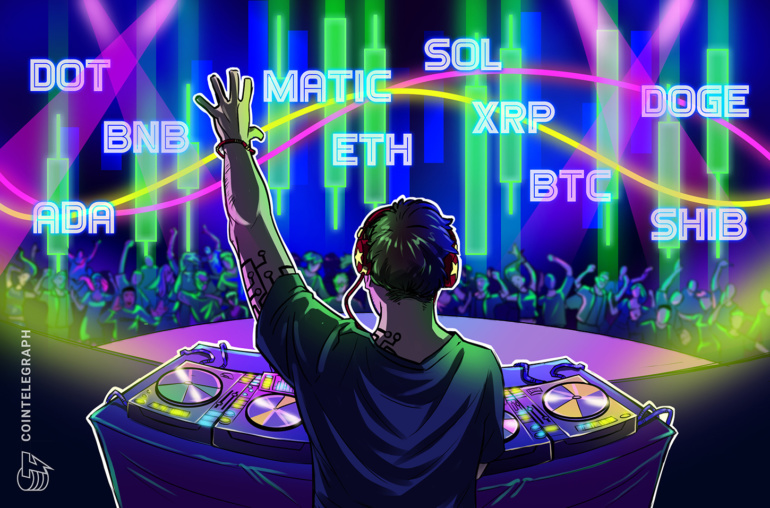Scams and fraud have been a global bane to most successful economic activities. From finance to trade & investment, hospitality, aviation, logistics, and manufacturing, malicious actors have saturated every financial and economic industry to scam unsuspecting users in respective industries. The digital space has not been spared by these malicious players who will stop at nothing to con people out of their assets. Since the advent of blockchain technology, con artists have devised several dubious means to defraud unsuspecting victims within the crypto space. However, these malicious players have no limit as they’ve extended their dubious activities to the NFT space. As such, we take a look at the NFT scams to watch out for in 2023. Types of NFT Scams in the Decentralized Space1. Phishing ScamsPhishing scams are fraudulent activities that involve adversaries deceiving their victims to reveal sensitive data that can be instrumental in breaching security architecture. In the NFT space, it can be deployed by sending dubious website links to victims, where they’ll be required to input personal information. This scam was deployed against CryptoBatz NFT holders a few days after launching the CryptoBatz collection in January 2022. The phishing Discord link was embedded in an old official tweet shared on December 31, 2021, directing users to a fake Discord server where they were made to connect their crypto wallet for complete verification. Unknowingly, those who followed through lost crypto tokens stored in their connected wallets. Similarly, Azuki lost over $750k in January 2023 when an adversary shared a malicious link on its platform.Another notable similar attack occurred in April 2022 on BAYC’s official Instagram page, where almost $3M worth of BAYC NFTs was stolen. The compromised Instagram page shared a malicious link, redirecting victims to a dubious airdrop page. Bored Ape NFT holders were required to sign a smart contract transaction from their wallets, allowing the adversaries to access unsuspecting victims’ wallets. 2. Bidding ScamsYou might wonder how collectors/investors can be scammed while trying to sell their NFTs. Well, it is possible.How?A bidding scam is direct and can go unnoticed if the seller doesn’t double-check the bidding price for an item before accepting such a bid. For instance, a creator/collector can list their NFTs on a marketplace with a bidding option. Since the highest bidder usually gets the item, the scammer will bid the highest to stay above other bidders. Sometimes, they offer outrageous bids to convince the seller, like bidding 40 wETH ($69,520) when other was bidding 5-6 ETH. The scammer with the highest bid will change the crypto token offered to defraud the seller by probably changing the 40wETH to 40USDT or other lesser tokens. Unknowingly, the seller will accept the altered bidding without double-checking at $40 instead of the initial $69k+. 3. Clone or Fake MarketplaceNFT Marketplaces are instrumental to the creation and listing of NFTs. As such, they become an easy hotspot for scammers to waylay unsuspecting victims by cloning and hosting reputable marketplaces on almost identical domains. For example, scammers could clone Blur.io UI (user interface) and host it on Blur.com; they could clone OpenSea.io and host it on OpenSee.io or OpenSea.com. Due to the similar UI design, unsuspecting victims (collectors and creators) will mistake the clone marketplace for the genuine one. Using cloned marketplaces or NFT-related platforms gives hackers/scammers unrestricted access to NFTs and Web 3 wallets for signing up. X2Y2 marketplace was entangled in this type of scam via Google ads in May 2022. The reputable NFT marketplace address (https://x2y2.io) was cloned to scam unsuspecting victims, and 100 ETH was reportedly stolen before it was discovered.This scam is not restricted to Google ads; scammers can go as far as cloning official Twitter or Instagram pages. Such an example is the recent Nakamigos airdrop shared on Twitter on August 7. However, the official Twitter page of Nakamigos had no announcement of such an event. Juxtaposing the contradicting Twitter pages, the official page has a verified icon, and the cloned Twitter page has “@NakamlgosNFT” instead of the “@Nakamigos” found on the verified page.Moreover, in order to gain a degree of legitimacy to the scam, the fake airdrop made its way into onto a reputable bitcoin website, where it shared an embedded Twitter post to the fake Nakamigos page. This highlights a bold new move from the unwelcome tricksters and indicates that they are willing to invest in paid articles to get their message out.4. Pirated/Counterfeit NFTsScammers can also go as far as issuing pirated NFTs to unsuspecting victims. This fraudulent act can come in different dimensions, from selling a copied NFT on a reputable marketplace to selling a fake NFT at a lower price on a cloned marketplace. Scammers can also alter duplicated NFTs by tweaking their attributes or color. Most reputable or blue-chip NFTs are usually the subject of this NFT scam. 4. Rug PullA rug pull is a fraudulent act adopted by scammers within the decentralized space to lure unsuspecting victims into investing in a project while they abscond with victims’ investments. It is usually done by hyping a crypto/NFT-related project using social media influencers; once investors have bought into their project, they abscond with the money, sometimes over a prolonged period of time. An NFT rug pull can also be deployed by issuing random and non-unique NFTs to investors after promising glamorous tokens. Such is the case of the infamous Iconics rug pull in 2021, where investors were issued random emojis instead of the promised 3D figurines.Another NFT rug pull was the Frosties NFT, the first NFT rug pull in 2022, costing investors $1.2M. The creator rug pulled the project a few hours into the public minting by deleting the NFT’s Discord server on January 9. The scam was later confirmed when the official Twitter page tweeted, “I’m sorry” before disappearing. Another similar case occurred in October 2021 when “Evolved Apes” NFT was launched. The developer promised investors would get unique Apes that would be used to partake in a fighting game and earn crypto rewards. However, the creator absconded with 798 ETH, leaving investors with jpeg Ape images.How to Avoid NFT ScamsAvoiding NFT scams doesn’t require solving complex equations; it only requires conducting thorough research and verification before taking action. Furthermore, it also requires double-checking transactions before signing them to avoid being a victim of either phishing attacks or short-changed NFT sales. In most cases of NFT scams, most creators/developers were not reputable actors within the NFT space; they were allegedly anonymous, making them easily scam NFT investors and enthusiasts. Meanwhile, using reputable marketplaces and investing in NFTs from reputable brands with exciting track records is safer to avoid being a scam victim.Scams in the decentralized space are not restricted to cryptos alone; malicious actors have been laying siege to the NFT landscape to scam unsuspecting victims via various dubious means. The above-highlighted methods of defrauding are just a few of the proliferating ways scammers are using to defraud their victims within the NFT space. Other forms of defrauding NFT investors, collectors, and enthusiasts include Catfishing/Impersonation: Impersonating officials of reputable brands in the NFT space to gain access to personal information to steal from the victim’s wallet. Community Hack: Hacking official community platforms like Telegram, Discord, Twitter, and Instagram, to lure victims to phony websites or programs like fake airdrops. Web3 Wallet Hacks: Hacking victims’ wallet to steal their NFTs and other crypto assets.Want more? Connect with NFT PlazasJoin the Weekly NewsletterFollow us on TwitterLike us on FacebookFollow us on Instagram*All investment/financial opinions expressed by NFT Plazas are from the personal research and experience of our site moderators and are intended as educational material only. Individuals are required to fully research any product prior to making any kind of investment.Technical writer, an enthusiast for everything blockchain and decentralized world.
Source link



